Do you have a question about the Xerox Phaser 3635MFP and is the answer not in the manual?
| Network ready | Yes |
|---|---|
| Dimensions (WxDxH) | 472 x 478 x 54 mm |
| Networking features | Fast Ethernet |
| All-in-one functions | Copy, Fax, Print, Scan |
| Color all-in-one functions | Scan |
| Print technology | Laser |
| Maximum resolution | 1200 x 1200 DPI |
| Time to first page (black, normal) | 9 s |
| Print speed (black, normal quality, A4/US Letter) | 33 ppm |
| Digital sender | No |
| Maximum duty cycle | 75000 pages per month |
| Page description languages | PCL 5e, PCL 6, PostScript 3 |
| Copier resize | 25 - 400 % |
| Maximum copy resolution | 600 x 600 DPI |
| Maximum number of copies | 99 copies |
| Scan to | E-mail, Fax, FTP, USB |
| Maximum scan area | 220 x 300 mm |
| Image formats supported | JPG, TIF |
| Faxing | Mono faxing |
| Modem speed | 33.6 Kbit/s |
| Fax coding methods | JBIG, JPEG, MH, MMR (Fax coding method), MR |
| Fax speed dialing (max numbers) | 199 |
| Paper input type | Paper tray |
| Total input capacity | 550 sheets |
| Total output capacity | 250 sheets |
| Maximum number of input trays | 3 |
| Auto document feeder (ADF) input capacity | 60 sheets |
| Maximum print size | 216 x 356 mm |
| Paper tray media types | Bond paper, Envelopes, Labels, Plain paper, Recycled paper, Transparencies |
| ISO A-series sizes (A0...A9) | A4, A5 |
| Maximum ISO A-series paper size | A4 |
| Display | LCD |
| Market positioning | Business |
| Standard interfaces | Ethernet, USB 2.0 |
| USB 2.0 ports quantity | 1 |
| Security algorithms | 802.1x RADIUS, HTTPS |
| Supported network protocols (IPv4) | FTP, HTTP, HTTPs, LPR, SNMPv1, SNMPv2, SNMPv3, TCP/IP, UDP |
| Internal memory | 512 MB |
| Card reader integrated | - |
| Internal storage capacity | 80 GB |
| Sound pressure level (printing) | 59 dB |
| AC input voltage | 220 - 240 V |
| AC input frequency | 50 - 60 Hz |
| Power consumption (standby) | 15 W |
| Power consumption (PowerSave) | 55 W |
| Power consumption (average operating) | 600 W |
| Mac operating systems supported | Mac OS X 10.3 Panther, Mac OS X 10.4 Tiger, Mac OS X 10.5 Leopard, Mac OS X 10.6 Snow Leopard, Mac OS X 10.7 Lion |
| Windows operating systems supported | Windows 2000, Windows 2000 Professional, Windows Vista Business, Windows Vista Business x64, Windows Vista Home Basic, Windows Vista Home Basic x64, Windows Vista Home Premium, Windows Vista Home Premium x64, Windows Vista Ultimate, Windows Vista Ultimate x64, Windows XP Professional, Windows XP Professional x64 |
| Storage temperature (T-T) | 10 - 32 °C |
| Operating temperature (T-T) | 16 - 30 °C |
| Storage relative humidity (H-H) | 20 - 80 % |
| Operating relative humidity (H-H) | 30 - 70 % |
| Sustainability certificates | ENERGY STAR |
| Certification | CE, FCC, RoHS |
Explains the structure and purpose of the service manual, covering its sections.
Details procedures for initiating and completing a service call.
Contains procedures for diagnosing and isolating faults.
Covers procedures for diagnosing and repairing image quality faults.
Provides instructions for part removal, replacement, and adjustment.
Lists and illustrates all spare parts for the machine.
Contains general procedures, product specifications, and information.
Provides wiring diagrams for the machine's electrical systems.
Details any accessories available for the machine.
Defines the usage of warnings, cautions, and notes in the manual.
Symbol indicating susceptibility to electrostatic discharge damage.
Symbol indicating a laser radiation hazard warning.
Lists general precautions to prevent personal injury and equipment damage.
Details precautions for handling electrostatically sensitive devices (ESDs).
Outlines precautions for handling and replacing lithium batteries.
Defines requirements for notifying health and safety incidents.
States the goal of prompt incident resolution and regulatory compliance.
Outlines initial reporting procedures and responsibilities for incidents.
General definition for warnings about potential personal injury.
General definition for warnings about severe personal injury or death.
Italian definition for warnings about potential personal injury.
German definition for warnings about potential personal injury.
Spanish definition for warnings about potential personal injury.
Section detailing the steps for service calls.
Initial actions for a service call to gather machine information.
Warns about electrical and moving part hazards during service.
Warns about working in confined spaces and the need for adequate space.
Gathers machine performance information at the start of a service call.
Procedures for the initial service call, including checks.
Actions to determine the reason for a service call.
Used to identify the cause of a fault in the machine.
Provides information on component life and maintenance.
Evaluates system operation and completes the service call.
Details machine configurations and available options.
Steps for determining the cause of a service call.
Steps for diagnosing and repairing subsystem faults.
Instructions for handling displayed fault codes.
Procedure for addressing machine power failures.
Procedure for handling machine boot cycle failures.
Procedure for addressing User Interface display issues.
Procedure for diagnosing fax-related faults.
Procedure for addressing stapler malfunctions.
Procedure for resolving incorrect copying results.
Procedure for diagnosing unusual machine noises.
Procedure for addressing overheating or unusual odors.
Procedure for diagnosing image quality issues.
Procedure for entering the diagnostic mode.
Explanation of fault code structure and history files.
Procedure for checking the machine status.
Tools available for system administration.
Details the various reports available for the machine.
Procedure for upgrading the machine's firmware.
Provides detailed machine specifications.
Lists specifications for documents fed through the DADF.
Lists specifications for paper and media types.
General precautions for disassembling and reassembling components.
Provides machine hardware and software information.
Describes the user interface tests available.
Outlines space requirements for safe operation and service access.
Glossary of technical terms, acronyms, and abbreviations.
Procedure to test the CCD for image quality analysis.
Details HFSI history viewing and settings modification.
Provides information on RoHS Directive compliance.
Procedure to test the document edge detection routine.
Steps for performing subsystem maintenance.
Details component life expectancies for the machine.
Steps to evaluate system operation and complete a service call.
Lists faults related to standby power.
Lists faults related to the user interface.
Lists faults related to machine run control.
Lists faults related to the Document Automatic Document Feeder.
Lists faults related to the Laser Scanner Unit.
Lists faults related to paper supply from trays.
Lists faults related to paper transport mechanisms.
Lists faults related to the xerographic process.
Lists faults related to fusing and transport.
Lists faults related to the scanner unit.
Lists faults related to the scan to email function.
Lists faults related to the network controller.
Lists faults related to the fax function.
Miscellaneous faults not categorized elsewhere.
Steps to resolve the front door open error.
Steps to resolve the fuser door open error.
Steps to resolve the stapler door open error.
Steps to identify the cause of a power supply failure.
Steps to resolve USB device faults.
Lists MSOK fault messages and recommended actions.
Lists OSOK fault messages and recommended actions.
Steps to resolve tray 1 paper information mismatch errors.
Steps to resolve tray 2 paper information mismatch errors.
Steps to resolve bypass tray paper information mismatch.
Steps to resolve foreign device interface faults.
Steps to resolve memory access failures.
Steps to resolve hard disk drive faults.
Steps to resolve UI to Main PWB communication errors.
Steps to resolve Main PWB to Tray 2 communication errors.
Steps to resolve Main PWB software lockup issues.
Steps to resolve DADF lead edge jam issues.
Steps to resolve DADF door open during operation errors.
Steps to resolve DADF sensor actuation errors.
Steps to resolve oversize document feeding errors in DADF.
Steps to resolve DADF lead edge registration timing issues.
Steps to resolve DADF door open errors.
Steps to resolve LSU errors, including laser beam detection.
Steps to resolve tray 1 paper empty detection errors.
Steps to resolve paper jams in the tray 1 feed area.
Steps to resolve tray 2 paper empty detection errors.
Steps to resolve paper jams in the tray 2 feed area.
Steps to check for paper jams in the tray 2 feed area at power on.
Steps to resolve bypass tray paper empty detection errors.
Steps to resolve registration sensor issues with bypass tray paper.
Steps to resolve fuser exit sensor actuation jams.
Procedure for resolving paper jams in the tray 2 feed area.
Steps to resolve fuser exit sensor actuation jams.
Steps to resolve duplex jam 1 sensor actuation issues.
Steps to resolve duplex jam 1 sensor registration timing issues.
Steps to resolve exit tray full errors.
Actions for when the print cartridge is almost empty.
Actions for when the print cartridge is near end of life.
Procedure for replacing the drum at end of life.
Steps to resolve print cartridge communication errors.
Steps to resolve fuser errors related to operating temperature.
Steps to resolve fuser overheating errors.
Actions for when the fuser assembly is near end of life.
Procedure for replacing the fuser assembly.
Steps to resolve mechanical faults with the CCD module.
Steps to resolve scan to email function faults.
Resolves issues with unassigned email addresses for group names.
Addresses email transmission failures from the SMTP server.
Resolves issues with invalid or restricted recipient email addresses.
Addresses issues when scanned mail exceeds size limits.
Resolves problems with improperly formatted email IDs.
Addresses issues when a selected group number is unavailable.
Resolves issues when HDD is full during scan to email.
Addresses insufficient memory for job preparation.
Resolves NIC errors during SMTP or network operations.
Addresses network connection failures during SMTP or LDAP.
Resolves invalid user name or password errors.
Addresses failures to contact the SMTP server.
Resolves failures to contact the DNS system.
Addresses issues with mail size exceeding server limits.
Addresses failures to contact the LDAP server.
Resolves LDAP server transmission errors.
Addresses LDAP search timeout issues.
Resolves issues where LDAP server cannot match entries.
Addresses session timeouts due to inactivity.
Steps to resolve network controller problems.
Resolves IP address conflicts with other devices.
Addresses errors when establishing a server connection.
Resolves issues where the designated server is not found.
Addresses failures to log in to a designated server.
Resolves permission errors during server access.
Addresses issues when the *.lck directory already exists.
Resolves issues related to a disconnected network cable.
Addresses user cancellation of network scan jobs.
Resolves document jams during scan operations.
Addresses errors when sending image files.
Resolves issues with file names exceeding destination limits.
Addresses existing file names on the destination server.
Steps to resolve server errors related to IP address assignment.
Steps to resolve 802.1X authentication failures.
Steps to resolve various fax function faults.
Addresses fax transmission or reception communication failures.
Resolves issues with mailbox communication availability.
Addresses scanning errors during manual fax dialing.
Resolves issues with unavailable group locations.
Addresses incompatibility with remote party features.
Resolves issues with busy remote fax lines.
Addresses phone line problems affecting fax transmission.
Resolves issues when fax data memory is full.
Addresses low available fax memory.
Resolves failures to connect to remote fax after redial attempts.
Addresses issues with unassigned speed dial numbers.
Resolves issues where user memory is lost during power outages.
Indicates machine waiting to re-dial.
Final steps for fax fault resolution.
Steps to resolve fax faults without a displayed code.
Steps to isolate and identify sources of unusual machine noises.
Lists potential causes and solutions for noises.
Addresses squeaking noises, listing causes and solutions.
Addresses unusual scanner noises, listing causes and solutions.
Steps to resolve UI touch screen errors.
Steps to diagnose faulty machine fans.
Steps to resolve incorrect copying results from specific features.
Steps to resolve stapler operational failures.
Steps to resolve machine boot failures.
Procedure to check the main PWB before replacement.
Steps to diagnose input/output voltage faults of the main PWB.
Steps to clear memory or software faults.
Final steps after performing software checks.
Determines the source of an image quality problem.
Used when the machine produces blank copies.
Used when the machine produces black copies and prints.
Used when the scanner produces blurred images.
Used for black lines or bands along the process direction.
Used for white lines along the process direction.
Used when the machine produces light images.
Used when the machine produces dark images.
Used for dark or spotted backgrounds.
Used when printed sheets have ghost images.
Used for stains on the non-image side of the paper.
Used when the image is improperly fused.
Used for blank areas not forming a regular pattern.
Used for blank areas forming a regular pattern.
Used for varying image density across the process direction.
Used for bands appearing across the process direction.
Used for regular black or white defects across the process direction.
Used for lead edge offset issues with DADF copies.
Used when copies are poorly registered.
Specifies requirements for solid area density on prints.
Specifies requirements for print skew.
Specifies requirements for image registration.
Procedures for components related to standby power.
Procedures for components related to the user interface.
Procedures for machine run control components.
Procedures for main drive assembly components.
Procedures for DADF components.
Procedures for LSU components.
Procedures for paper supply components.
Procedures for paper transport components.
Procedures for xerographic components.
Procedures for fusing and transport components.
Procedures for scanner components.
Procedures for removing external covers.
Adjustments related to standby power.
Adjustments related to the document transport system.
Adjustments related to the paper transport system.
Steps to remove the Main PWB.
Steps to replace the Main PWB.
Steps to remove the Main BLDC motor.
Steps to replace the Main BLDC motor.
Steps to remove the DADF door open sensor.
Steps to replace the DADF door open sensor.
Steps to remove the DADF lift solenoid.
Steps to remove DADF registration and scan sensors.
Steps to replace DADF registration and scan sensors.
Steps to remove DADF transport and feed assemblies.
Steps to remove the DADF drive assembly.
Steps to replace the DADF drive assembly.
Steps to remove the DADF paper length sensor.
Steps to replace the DADF paper length sensor.
Steps to remove the pickup assembly.
Steps to replace the pickup assembly.
Steps to remove the LSU component.
Steps to replace the LSU component.
Steps to remove the LSU interlock switch.
Steps to replace the LSU interlock switch.
Steps to remove the bypass feed assembly.
Steps to replace the bypass feed assembly.
Steps to remove registration and tray 1 pickup solenoids.
Steps to replace solenoids.
Steps to remove the bypass pickup roll.
Steps to replace the bypass pickup roll.
Steps to remove tray 2 feed motor and pickup solenoid.
Steps to replace tray 2 feed motor and pickup solenoid.
Steps to remove the bypass paper empty sensor.
Steps to replace the bypass paper empty sensor.
Steps to remove the registration roll clutch.
Steps to replace the registration roll clutch.
Steps to remove the CRUM PWB.
Steps to replace the CRUM PWB.
Steps to remove the duplex motor.
Steps to replace the duplex motor.
Steps to remove the exit motor.
Steps to replace the exit motor.
Steps to remove the front duplex guide assembly.
Steps to remove exit roll and idler assemblies.
Steps to replace exit roll and idler assemblies.
Steps to remove the fuser terminal.
Steps to replace the fuser terminal.
Steps to remove the heat lamp.
Steps to remove the scanner assembly.
Steps to replace the scanner assembly.
Steps to remove scanner components.
Steps to remove external covers.
Steps to replace external covers.
Steps to remove the outbin assembly.
Steps to remove the front mid cover.
Steps to replace the front mid cover.
Explains the purpose of setting up the machine correctly.
Outlines how to access machine settings.
Explains how to set DADF side edge registration.
Steps to adjust DADF side edge registration.
Explains how to measure and adjust lead edge registration.
Steps to check lead edge registration.
Steps to adjust lead edge registration.
Explains how to measure and adjust side edge registration.
Steps to check side edge registration.
Steps to adjust side edge registration.
Parts list for standby power components.
Parts list for user interface components.
Parts list for machine run control components.
Parts list for main drive assembly components.
Parts list for DADF components.
Parts list for imaging components.
Parts list for paper supply components.
Parts list for paper transport components.
Parts list for xerographic components.
Parts list for fusing and transport components.
Parts list for scanner components.
Parts list for main covers.
Procedure for entering the diagnostic mode.
Explanation of fault code structure and history files.
Procedure for checking the machine status.
Tools available for system administration.
Details the various reports available for the machine.
Procedure for upgrading the machine's firmware.
Provides detailed machine specifications.
Lists specifications for documents fed through the DADF.
Lists specifications for paper and media types.
General precautions for disassembly and reassembly.
Provides machine hardware and software information.
Describes the user interface tests available.
Outlines space requirements for safe operation and service access.
Glossary of technical terms, acronyms, and abbreviations.
Procedure to test the CCD for image quality analysis.
Details HFSI history viewing and settings modification.
Provides information on RoHS Directive compliance.
Procedure to test the document edge detection routine.
Describes how to enter and exit the diagnostic mode.
Step-by-step guide for entering the diagnostic mode.
Instructions for accessing the diagnostic mode.
Details the diagnostic screen and available routines.
Instructions for exiting the diagnostic mode.
Explains fault code structure and history contents.
Describes accessing and viewing fault history.
Steps for accessing fault history.
Explains the prefixes for function and fault codes.
How to view recent faults via the Machine Status key.
Describes the machine information that is available.
Steps to access machine information.
Describes the available system administration tools.
Steps to access system administration tools.
Details the various reports available for the machine.
Report showing system data settings and machine settings.
Report showing specific information concerning scan to email activities.
Report showing authentication for scan to email.
Report showing all email addresses in the local address book.
Report showing groups and associated email addresses.
Prints all listed reports.
Report showing stored telephone numbers.
Report on the most recent 50 fax transmissions.
Report on the most recent 50 fax receptions.
Report on fax job success or failure.
Report on last fax job protocol information.
Report on polling fax job success or failure.
Report showing junk faxes.
Report on stored documents for delayed activity.
Report on fax options and their current settings.
Report on the machine's total print count.
Report on electronic auditron accounts and counters.
Report on user account activity.
Prints the Auditron and Xerox Standard Accounting lists.
Report printed after connecting to the mail server.
Prints all available email reports.
Information required by the call center for service requests.
Brief description of machine functions and commands.
Report on fault codes generated by the machine.
Report showing the last 40 fault codes.
Details the firmware upgrade procedure.
Steps for upgrading firmware via USB.
Table of general machine specifications.
Table of fax specifications.
Table of scanner specifications.
Lists specifications for documents fed through the DADF.
Refers to table for DADF specifications.
Lists specifications for paper and media sizes.
Refers to paper and media specifications.
Details paper specifications and tray settings.
Table of paper and media types and input sources.
Table detailing paper or media weights.
Specifications for transparency usage.
Specifications for envelope usage.
Specifications for label usage.
General precautions for disassembly and reassembly.
Important notes for servicing components.
Provides machine hardware and software information.
Steps to access service information.
Describes user interface tests available in GP 4 and dC305.
Refers to relevant procedures for UI tests.
Verifies the functionality of user interface buttons.
Verifies the functionality of the user interface audio tone.
Verifies the functionality of user interface LEDs.
Verifies the functionality of the user interface touch screen.
Verifies the functionality of the LCDM.
Verifies the SRAM used by the video controller.
Procedure to reset the user interface.
Checks UI application software checksum.
Re-calibrates the touch screen.
Outlines space requirements for safe operation and service.
Warning about working in confined spaces.
Specific space requirements for hallways and exit routes.
Refers to machine height, weight, and dimensions.
Details the height of the machine with DADF and trays.
Details the weight of the machine and accessories.
Provides dimensions for safe operation and workspace.
Table showing required working space dimensions.
Refers to the table for glossary terms.
Explains the purpose of the shading test.
Steps for performing the shading test.
Provides methods to view HFSI history and change settings.
Steps to access and modify HFSI settings.
Provides information on the RoHS Directive.
Notes the current scope of RoHS restrictions.
Lists hazardous substances regulated by RoHS.
Information on identifying RoHS compliant machines.
Explains the purpose of the scan edge test.
Steps for performing the scan edge test.
Resets the Auditron and System Administration password.
Steps to reset the Auditron Master PIN.
Allows printing and analysis of the Fax protocol report.
Steps to print and analyze the Fax protocol report.
Guides on analyzing the fax protocol report content.
Reviews and modifies machine configuration parameters stored in NVM.
Explains NVM item identification using chain and location codes.
Steps for accessing and using NVM Read/Write function.
Resets copier NVM settings to default.
Steps to initialize copier NVM settings.
Table of copier NVM settings.
Resets network settings to default.
Steps to initialize network NVM settings.
Resets fax card NVM settings to default.
Steps to initialize fax card NVM settings.
Table of fax NVM settings.
Initiates component testing of the local UI.
Refers to GP 12 for UI test details.
Steps for performing UI tests.
Shows input component status and energizes output components.
Explains using codes to control components.
Shows status of input components when codes are entered.
Explains how components energize for set times.
Tables listing input codes for diagnostics.
Input codes for Front cover interlock.
Input codes for DADF sensors.
Input codes for LSU motor status.
Input codes for tray paper empty sensors.
Input codes for feed sensors.
Input codes for THV bias.
Input codes for fuser temperature.
Output codes for motors and fans.
Output codes for DADF motors and solenoids.
Output codes for LSU motor and LD power.
Output codes for bypass feed solenoid and tray solenoids.
Output codes for bias voltages and SMPS fan.
Output codes for fuser functions.
Output codes for fax line functions.
Prints internal test patterns for image quality analysis.
Steps to print internal test patterns.
Lists tag numbers for machine modifications.
Describes assigned tag numbers and their purpose.
Information included with each tag item.
Location of the Mod/Tag plate.
Explains classification codes for tags.
Indicates that no machine tags have been issued.
Explains the use of wiring diagrams for fault tracing.
Shows the locations of PWB connectors.
Wiring diagrams aid fault tracing and complement RAPs.
Lists PWB connections shown in the wiring diagrams.
Highlights features of the wiring diagrams.
Diagram showing input power and fuser connections.
Diagram showing HVPS and sensor connections.
Diagram showing Main PWB and scanner assembly connections.
Diagram showing Main PWB and UI assembly connections.
Diagram showing Main PWB and related component connections.
Diagram showing Main PWB and Connection PWB connections.
Diagram showing Main PWB, tray 2, and bypass feed connections.
Diagram showing Main PWB and main drives assembly connections.
Diagram showing PWB, stapler, and duplex drives connections.
Diagram showing DADF connections.
Shows the locations of PWB connectors.
Diagram of SMPS PWB connector locations.
Diagram of HVPS PWB connector locations.
Diagram of Main PWB connector locations.
Diagram of Connection PWB connector locations.
Diagram of UI PWB connector locations.
Diagram of DADF PWB connector locations.
Diagram of Tray 2 PWB connector locations.
Information on installing the foreign device interface.


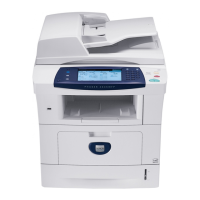
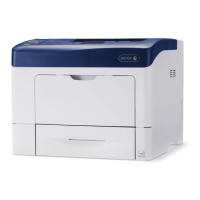
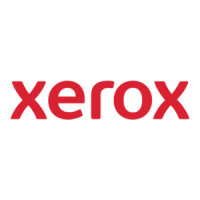

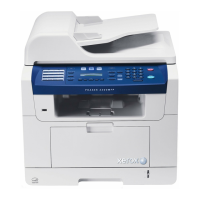

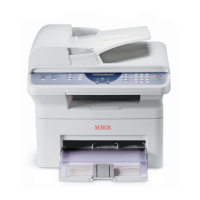
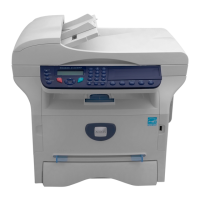
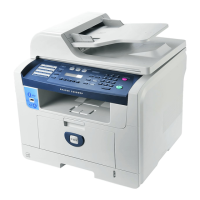

